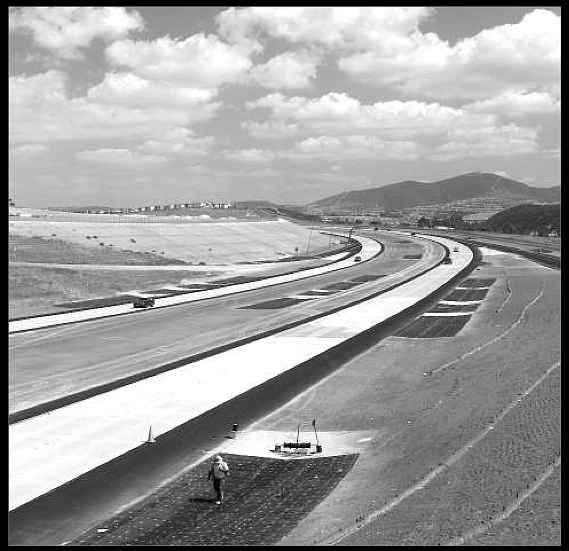 Facebook
Facebook
 X
X
 Instagram
Instagram
 TikTok
TikTok
 Youtube
Youtube
On the surface, Carmel Valley is not the most charming town. It is a village of strivers: young professionals pushing to move up the ladder, students scrambling for accolades, parents and high schoolers pumping away at health clubs. In Carmel Valley there are no historical buildings, only long curving strips of Pardee tract housing. There are no colorful residences, thanks to homeowners' association dictates. Carmel Valley is almost — not quite — on the water. Consequently, this neighborhood is a station, a station where twentysomethings hope they can afford to stop and raise children and send those children to school, where fiftysomethings hope to leave for the harbors of Del Mar or La Jolla.

Despite all this, though, Carmel Valley succeeds at its modest intention: to be a suburb. Carmel Valley is about kids and schools and cul-de-sacs with basketball hoops. As a college student away from home for the first time, I know that it's possible to be nostalgic about this town.
I feel this most at Powerline Park, the playground above Torrey Pines High School. Like much of Carmel Valley, it's a figment of early '90s construction: two great rings of sand, plastic slides, a bulbous orange climbing structure. The tire swing is rusted, and the swings were removed years ago. The park brims with clichés: a father spotting a six-year-old on the monkey bars, a girl in a red dress tugging a butterfly kite, a gleaming line of minivans and station wagons on their way to or from orthodontists and vets and soccer practices.
At the back of the park, hidden behind a few concrete picnic tables, is a trailhead. When I was younger, my sister Emma and I would duck under the metal barrier that closes the path to vehicles and scramble down a rutted hill into the canyon, one of a few that crease the Carmel Valley landscape. Though our wild slopes were fringed with houses and power lines hissed overhead, we felt like adventurers. Emma and I pushed through the chaparral in search of small clearings, each one a potential clubhouse. We crept up on lizards that scampered into the underbrush. The day we saw a horseback rider below us at the bottom of the canyon, I felt we were part of the American West. My New York-bred parents missed the lush northeastern forests; I fell in love with yellow cacti flowers and the small, shiny leaves of Carmel Valley foliage.
I'm sure my classmates who grew up in Palo Alto, Andover, or Potomac could make arguments about the superiority of their suburbs — why their streets are the quaintest, why their town centers have the most community spirit. But that's okay. Pride of ownership is the point.

On the surface, Carmel Valley is not the most charming town. It is a village of strivers: young professionals pushing to move up the ladder, students scrambling for accolades, parents and high schoolers pumping away at health clubs. In Carmel Valley there are no historical buildings, only long curving strips of Pardee tract housing. There are no colorful residences, thanks to homeowners' association dictates. Carmel Valley is almost — not quite — on the water. Consequently, this neighborhood is a station, a station where twentysomethings hope they can afford to stop and raise children and send those children to school, where fiftysomethings hope to leave for the harbors of Del Mar or La Jolla.

Despite all this, though, Carmel Valley succeeds at its modest intention: to be a suburb. Carmel Valley is about kids and schools and cul-de-sacs with basketball hoops. As a college student away from home for the first time, I know that it's possible to be nostalgic about this town.
I feel this most at Powerline Park, the playground above Torrey Pines High School. Like much of Carmel Valley, it's a figment of early '90s construction: two great rings of sand, plastic slides, a bulbous orange climbing structure. The tire swing is rusted, and the swings were removed years ago. The park brims with clichés: a father spotting a six-year-old on the monkey bars, a girl in a red dress tugging a butterfly kite, a gleaming line of minivans and station wagons on their way to or from orthodontists and vets and soccer practices.
At the back of the park, hidden behind a few concrete picnic tables, is a trailhead. When I was younger, my sister Emma and I would duck under the metal barrier that closes the path to vehicles and scramble down a rutted hill into the canyon, one of a few that crease the Carmel Valley landscape. Though our wild slopes were fringed with houses and power lines hissed overhead, we felt like adventurers. Emma and I pushed through the chaparral in search of small clearings, each one a potential clubhouse. We crept up on lizards that scampered into the underbrush. The day we saw a horseback rider below us at the bottom of the canyon, I felt we were part of the American West. My New York-bred parents missed the lush northeastern forests; I fell in love with yellow cacti flowers and the small, shiny leaves of Carmel Valley foliage.
I'm sure my classmates who grew up in Palo Alto, Andover, or Potomac could make arguments about the superiority of their suburbs — why their streets are the quaintest, why their town centers have the most community spirit. But that's okay. Pride of ownership is the point.
Comments